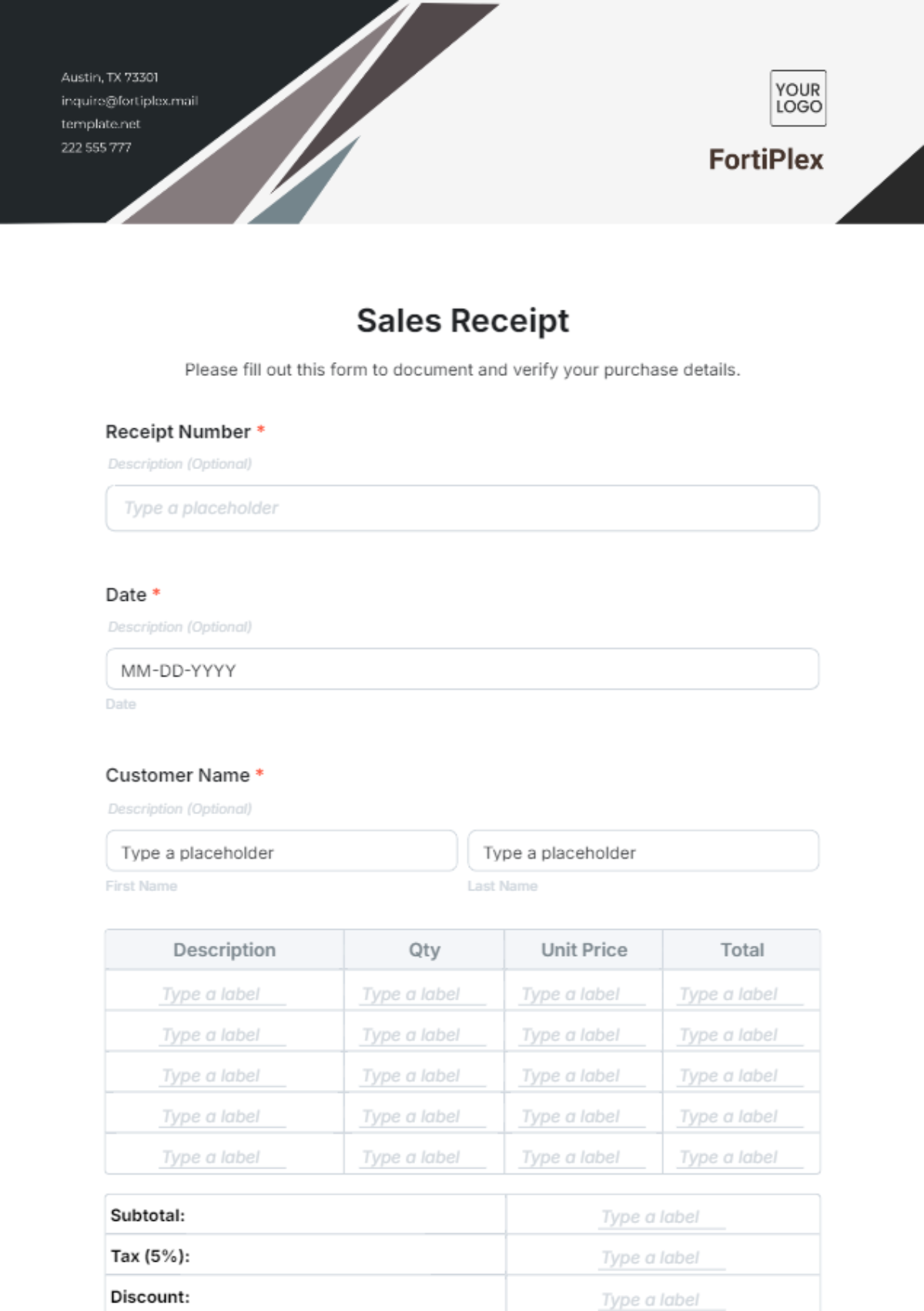Free Sales Lead Management Best Practices

- 100% Customizable, free editor
- Access 1 Million+ Templates, photo’s & graphics
- Download or share as a template
- Click and replace photos, graphics, text, backgrounds
- Resize, crop, AI write & more
- Access advanced editor
Enhance your sales lead management with the Sales Lead Management Best Practices Template, exclusively on Template.net. This editable and customizable template provides actionable strategies for effective lead handling. Tailor practices effortlessly with our Ai Editor Tool, ensuring alignment with your sales objectives. Elevate your sales performance with precision and efficiency.
You may also like
Sales Lead Management Best Practices
Introduction
Welcome to [Your Company Name]'s Sales Lead Management Best Practices Guide. In today's competitive business landscape, effective lead management is the linchpin of successful sales strategies. We understand the challenges that sales professionals face in generating, nurturing, and converting leads into loyal customers. That's why we've crafted this comprehensive guide to help you navigate the intricacies of lead management while ensuring compliance with US Sales legal and standard guidelines.
From lead generation to conversion, we'll walk you through each step, providing actionable insights, tips, and strategies. So, let's dive in and elevate your sales performance to new heights.
Lead Generation
Effective lead generation lays the foundation for successful sales. In this section, we'll guide you through the process of sourcing potential customers who have shown an interest in your products or services.
Identifying Your Target Audience: Start by clearly defining your ideal customer persona. Understand their demographics, pain points, and preferences. Use this information to tailor your lead generation efforts.
Diverse Lead Sources: Explore various lead generation channels, including inbound marketing, content marketing, paid advertising, and social media. Diversifying your sources increases your chances of reaching a wider audience.
Compelling Content: Create high-quality content that resonates with your target audience. Whether it's blog posts, eBooks, videos, or webinars, engaging content attracts and retains leads.
Optimized Website: Ensure your website is user-friendly, responsive, and optimized for search engines (SEO). Implement lead capture forms strategically throughout your site.
Social Media Engagement: Leverage your social media presence to engage with potential leads. Share valuable content, run targeted ads, and interact with your audience to build relationships.
Lead Capture
Once you've attracted potential leads, the next critical step is capturing their information. This section will guide you on how to effectively capture lead data through various touchpoints.
Strategically Placed Forms: Incorporate lead capture forms strategically on your website, landing pages, and other digital assets. These forms should be easy to locate and user-friendly, reducing friction for your potential leads.
Balanced Information Requests: Be mindful of the information you request from leads. Start with essential fields like name and email address. As trust builds, you can gather more detailed data.
Clear Value Proposition: Communicate the value of providing their information. Explain how subscribing or filling out a form will benefit the lead, such as access to valuable content, exclusive offers, or expert insights.
Progressive Profiling: Implement progressive profiling to collect additional information over time. As leads engage further, gradually request more details to build a comprehensive profile.
Consent and Privacy Compliance: Ensure that your lead capture processes comply with US Sales legal and privacy standards. Obtain explicit consent for contact and clearly outline your data usage policies.
Confirmation and Thank-You Pages: After successful submission, direct leads to confirmation and thank-you pages. These pages can include additional calls to action or guide leads on what to expect next.
Lead Qualification
Lead qualification is a pivotal step in ensuring that you focus your sales efforts on the most promising prospects. In this section, we'll explore how to assess and prioritize leads effectively.
Lead Scoring Criteria: Establish clear lead scoring criteria tailored to your business. Assign values to various lead attributes, such as job title, company size, engagement level, and online behavior. This scoring system helps you objectively assess lead quality.
Alignment with Ideal Customer Profile (ICP): Compare each lead against your ICP. Leads that closely match your ideal customer persona are typically more likely to convert into customers.
Behavioral Tracking: Monitor lead behavior, such as website visits, email opens, and content downloads. High levels of engagement may indicate a more qualified lead.
Data Validation: Ensure lead data accuracy by verifying information through data validation tools. Accurate data is crucial for effective lead qualification.
Lead Nurturing Signals: Consider how leads respond to your nurturing efforts. Are they progressing through the sales funnel? Engaged leads may require a different approach than those showing less interest.
Sales and Marketing Collaboration: Maintain open communication between your sales and marketing teams. Collaboration ensures that both departments are aligned on lead qualification criteria and can exchange insights on lead quality.
Scoring Adjustments: Periodically review and refine your lead scoring system based on the performance of your sales and marketing efforts. Be agile in adapting to changing market dynamics.
Lead Nurturing
Lead nurturing is the art of building relationships with potential customers over time. It involves providing them with valuable information and guidance to move them closer to a buying decision. Here are strategies for effective lead nurturing:
Email Marketing: Craft a series of personalized and relevant email campaigns to deliver valuable content, insights, and offers to your leads. Segment your email list based on lead behavior and preferences for more targeted messaging.
Content Marketing: Develop a content strategy that addresses the pain points and interests of your leads. Regularly create and share high-quality blog posts, whitepapers, webinars, and videos. Each piece should educate, inform, or entertain your audience while subtly promoting your products or services.
Personalized Communication: Tailor your interactions based on lead behavior and preferences. Send personalized messages that acknowledge their specific interests and needs. This personal touch demonstrates that you understand and care about their journey.
By combining these strategies with marketing automation tools, you can deliver timely and relevant content to your leads, increasing their engagement and trust in your brand. This ultimately positions you as a valuable resource and increases the likelihood of conversion when they are ready to make a purchase decision.
CRM (Customer Relationship Management) Integration
Integrating lead management processes with CRM systems is a strategic move that can significantly enhance your sales and marketing efforts. Here's why it's essential and how CRM tools assist in lead data management:
Holistic Customer View: CRM integration allows you to maintain a comprehensive profile of each lead, including their interactions with your company. This holistic view empowers your sales team to understand lead preferences, history, and needs.
Seamless Data Flow: CRM systems ensure a seamless flow of lead data between marketing and sales teams. Leads generated through marketing efforts are automatically funneled into the CRM, minimizing manual data entry and reducing the risk of errors.
Efficient Lead Tracking: CRM tools provide a centralized platform for tracking the progress of leads through the sales funnel. You can easily monitor lead status, communication history, and next steps, ensuring that no opportunities slip through the cracks.
Data Analysis: CRM systems offer robust reporting and analytics capabilities. Sales professionals can analyze lead data to identify trends, measure conversion rates, and make data-driven decisions to optimize lead management strategies.
Personalized Communication: CRM integration enables personalized and timely communication with leads. You can create targeted messaging based on lead behavior and preferences, improving the chances of conversion.
Sales and Marketing Alignment
Effective collaboration between sales and marketing teams is essential for successful lead management. Here's why aligning these two departments is crucial and how it benefits your business:
Shared Goals and Objectives: Aligning sales and marketing ensures that both teams share the same overarching goals and objectives, such as lead generation, nurturing, and conversion. This alignment creates a unified approach toward achieving revenue targets.
Lead Handoff: Clearly defined processes for lead handoff from marketing to sales reduce lead leakage and ensure that leads are contacted promptly. This seamless transition improves the chances of conversion.
Feedback Loop: Establish a feedback loop between sales and marketing. Sales can provide valuable insights into lead quality and conversion rates, which marketing can use to refine lead generation strategies.
Content Collaboration: Collaboration results in the creation of content that resonates with leads at different stages of the sales funnel. Sales teams can share their knowledge of customer pain points and objections, allowing marketing to develop content that addresses these concerns effectively.
Data Sharing: Access to a shared database of customer and lead information helps both teams personalize their interactions. It also ensures that both teams have access to accurate and up-to-date lead data.
Aligning sales and marketing fosters a culture of cooperation and shared responsibility for lead management. This synergy ultimately enhances the efficiency and effectiveness of your lead generation and conversion efforts.
Lead Scoring and Segmentation
Tracking the performance of lead generation and management efforts is essential for optimizing your sales and marketing strategies. Here's how analytics tools can assist, along with key metrics and KPIs to measure success:
Use of Analytics Tools
Analytics tools play a crucial role in evaluating lead generation and management efforts by providing insights and data-driven decision-making. They help in:
|
|
Key Metrics and KPIs
Measure the percentage of leads that progress through the sales funnel and eventually convert into customers.
Calculate how many leads turn into paying customers over a specified period.
Assign scores to leads based on their behavior, demographics, and engagement level.
Evaluate the rate at which leads drop out or unsubscribe from your communication.
Calculate the cost associated with acquiring each lead through different channels.
Determine the cost of acquiring a new customer, considering sales and marketing expenses.
Track email open rates, click-through rates, and website engagement to measure lead interest and engagement.
Measure the time it takes for leads to move through the sales funnel stages.
Evaluate the overall return on investment for your lead generation and management efforts.
Lead Tracking and Analytics
Utilizing analytics tools is paramount in evaluating the effectiveness of your lead generation and management efforts. These tools allow you to:
Monitor Behavior: Track how leads interact with your digital assets, revealing engagement levels and progression through the sales funnel.
Conversion Insight: Analyze conversion rates at each funnel stage to pinpoint areas for improvement.
A/B Testing: Conduct experiments and optimize assets based on data-driven results.
Key metrics and KPIs include conversion rate, lead quality score, customer acquisition cost (CAC), and ROI. By consistently measuring and analyzing these metrics, you can make informed decisions, enhance lead management strategies, and increase the efficiency of your sales and marketing initiatives.
Continuous Improvement and Optimization
Ongoing refinement is vital for staying competitive in lead management. Here's how to maintain excellence:
Regular Evaluation: Continuously assess lead management strategies, processes, and technologies.
Adaptation: Adjust tactics to changing market dynamics and customer behavior.
Feedback Loops: Encourage teams to share insights, fostering innovation.
Benchmarking: Compare your performance to industry standards and competitors.
Technology Updates: Keep abreast of new tools and platforms to stay efficient.
Training: Invest in ongoing training for sales and marketing teams.
Testing: Experiment with new approaches and iterate based on results.
By embracing a culture of improvement, you can ensure your lead management practices remain agile and effective, leading to consistent growth and success.
Conclusion
Mastering Sales Lead Management Best Practices is fundamental for sustainable growth in today's competitive landscape. By effectively generating, capturing, nurturing, and qualifying leads, and leveraging CRM integration, aligned teams, and analytics, your company can maximize its sales potential. Remember, continuous improvement and adaptation are keys to long-term success. Implement these strategies thoughtfully, and watch as your lead management efforts evolve into a robust driver of business success.



























